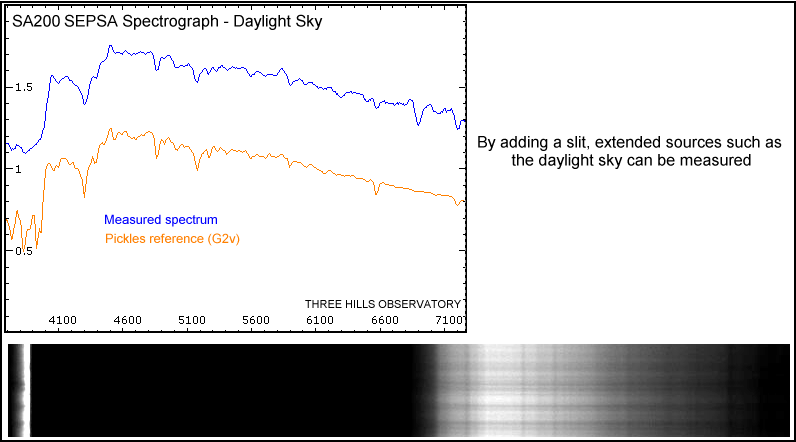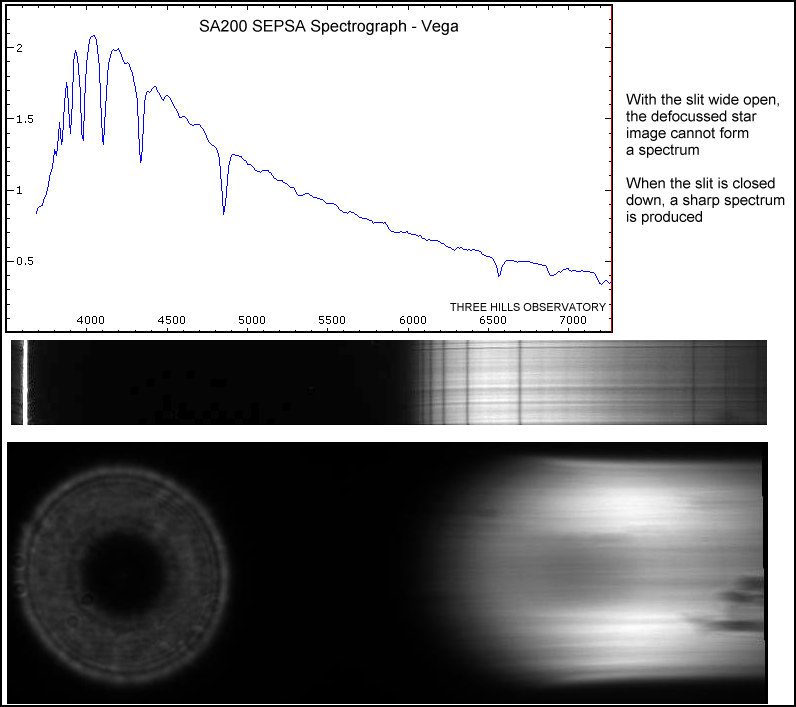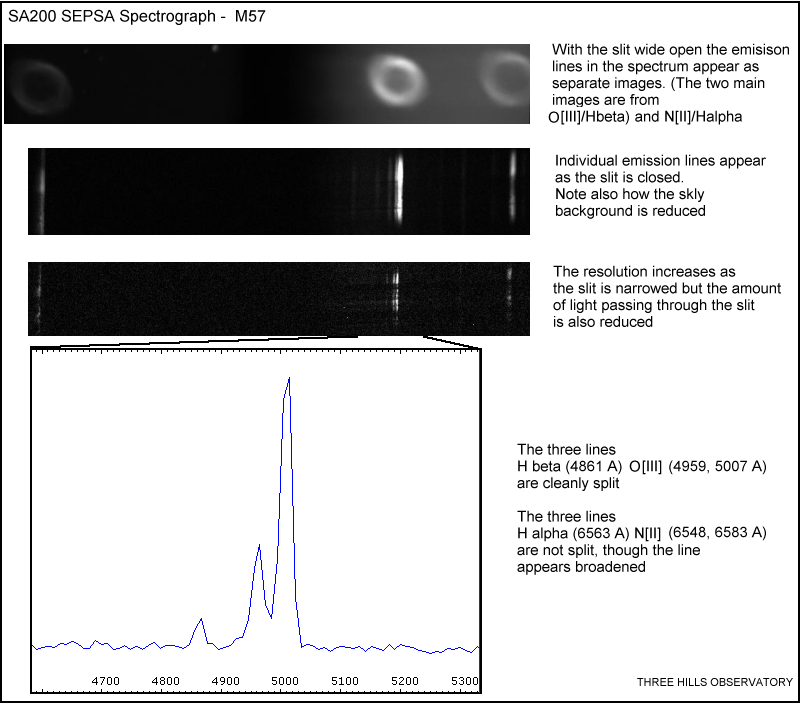The Star Analyser 200 used in the SEPSA Spectrograph
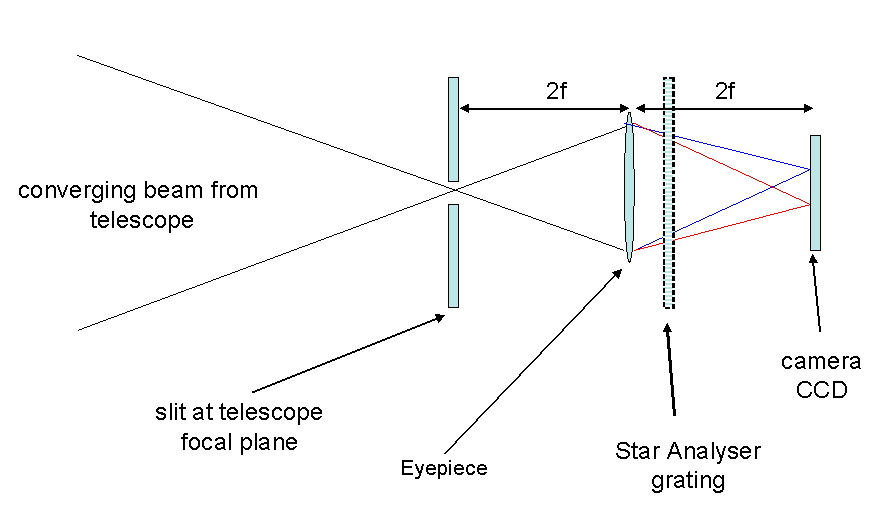 |
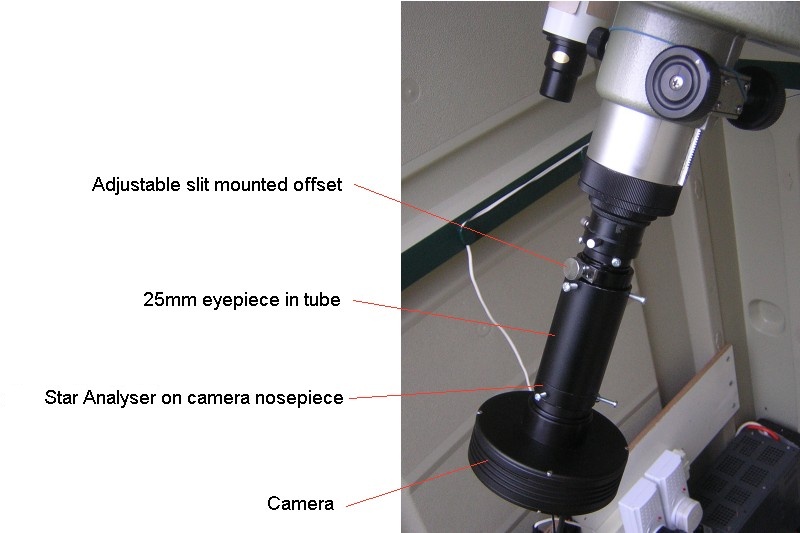 |
The original SEPSA (Slit Eypiece Projection Star Analyser) spectrograph was designed as simple way to incorporate a slit into a setup using the Star Analyser. Examples of its use can be seen here and here. In this design, the telescope focuses an image of the target onto an adjustable slit. An image of the slit is then projected on the camera sensor using an eyepiece as an objective lens (similar to an eyepiece projection imaging system). The Star Analyser grating is placed in the converging beam between the eyepiece and the camera.
The maximum distance between the grating and the camera sensor is limited in this configuration and in practical situations is often less than optimum for the SA100. Replacing the SA100 with the SA200 can either give a useful improvement in resolution for a given slit width or when recording extended objects, allows the slit to be opened wider, maintaining resolution while allowing more light through. See the examples below (daylight sky, Vega, M57) which used the SA200 in the same configuration as above with an ATIK 16IC-S camera, giving a useful 10 A/pixel dispersion .
